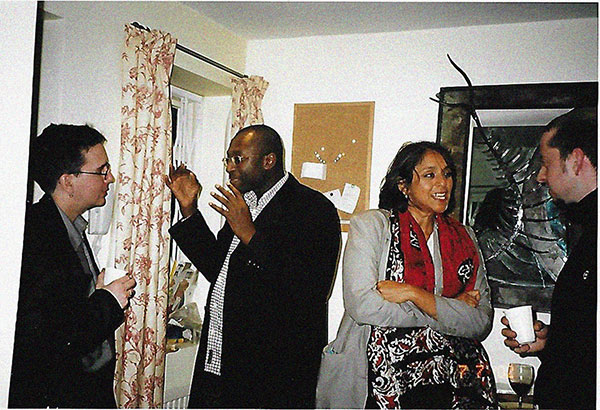Frank Wilderson III, “Gramsci’s Black Marx: Whither the Slave in Civil Society?,” Social Identities 9, no. 2 (2003), 229.
Robin Mackay and Armen Avanessian, “Introduction,” #Accelerate: The Accelerationist Reader (Falmouth, UK: Urbanomics, 2014), 4.
In Land’s own words: “There is no distinction to be made between the destruction of capitalism and its intensification. The auto-destruction of capitalism is what capitalism is. ‘Creative destruction’ is the whole of it, beside only its retardations, partial compensations, or inhibitions. Capital revolutionizes itself more thoroughly than any extrinsic ‘revolution’ possibly could. If subsequent history has not vindicated this point beyond all question, it has at least simulated such a vindication, to a maddening degree.” Nick Land, “Psycho Politics,” Jacobite, August 11, 2017 →.
Nick Srnicek and Alex Williams, “#Accelerate Manifesto for an Accelerationist Politics,” Critical Legal Thinking, May 14, 2013 →.
I have archived a portion of these blog entries and sites on Rhizome’s Webrecorder tool. They can be viewed at →.
Alex Williams, “Xenoeconomics and Capital Unbound,” Splintering Bone Ashes, October 19, 2008 →.
Ibid.
Ibid.
Mark Fisher, “Nihilism without negativity,” k-punk, October 20, 2008 →.
Alex Williams, “Post-Land: the paradoxes of a speculative realist politics,” October 26, 2008, Splintering Bone Ashes →.
Mark Fisher, “Spectres of Accelerationism,” k-punk, October 28, 2008 →.
Wilderson, “Gramsci’s Black Marx,” 229.
Iyko Day, “Being or Nothingness: Indigeneity, Antiblackness, and Settler Colonial Critique,” Critical Ethnic Studies 1, no. 2 (Fall 2015): 114.
Wilderson, “Gramsci’s Black Marx,” 225.
Williams, “Xenoeconomics and Capital Unbound”
Wilderson, “Gramsci’s Black Marx,” 231.
Ronald Judy, “On the Question of Nigga Authenticity,” boundary 2 21, no. 3 (1994).
Ian Baucom’s Spectres of the Atlantic (Durham: Duke University Press, 2005) delves into this historical relationship between slavery and late-capitalist speculation, arguing that the form of value that characterizes our time was workshopped through the Atlantic slave trade. We are “flesh as value.”[footnote David Marriott, “On Decadence: Bling Bling,” e-flux journal 79 (February 2017) →.
Sharpe introduces this phrase in her book In the Wake: On Blackness and Being (Durham: Duke University Press, 2016).
Jared Sexton, “The Rage: Some Closing Comments on ‘Open Casket,’” Contemptorary →.
Kodwo Eshun, More Brilliant Than the Sun: Adventures in Sonic Fiction (London: Quartet Books, 1998), 192–93.
McKenzie Wark, “Black Accelerationism,” Public Seminar, January 27, 2017 →.
Jamaican philosopher Sylvia Wynter theorizes this throughout her work, arguing that the category of human is a narrative constructed by European men for European men. Wynter develops a theory of “counterhumanism” in the face of this.
Thank you to manuel arturo abreu of Home School in Portland and Reed College for inviting me to present an earlier version of this text as a lecture by the same name. Thank you also to Hamishi Farah for jointly coining—however much in jest—“blaccelerationism,” and for always coming to the DM with an open mind. Lastly, thank you to Machine Project for hosting “Busta Rhymes at the End of the World.”
